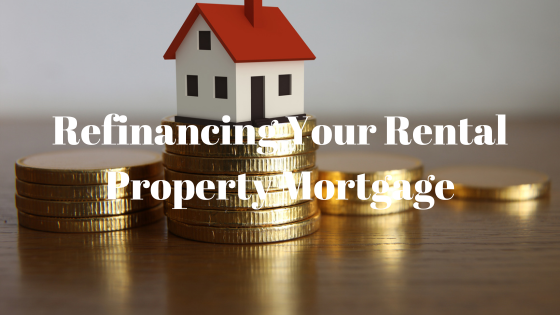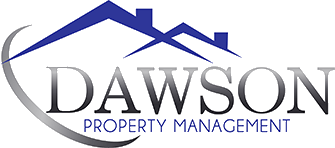Refinancing Your Rental Property Mortgage

Key Takeaways
- Refinancing can boost cash flow by lowering interest rates, adjusting loan terms, or accessing home equity.
- Lenders require strong credit, steady income, low debt, and sufficient cash reserves for approval.
- Careful preparation and comparing lenders help secure the best refinancing terms.
Are high-interest payments on your rental property mortgage holding back your profits? Usually, when financing a rental property, investors may accept whatever financing terms are available in the market. But when rates drop, this can leave them stuck with costly monthly payments.
Mortgage refinancing offers a way out of this difficult situation. Refinancing a mortgage simply means taking on a new loan with better terms to pay off the existing one. Mortgage refinancing is an important tool investors can use to improve cash flow from their rental property.
So why should you consider refinancing your rental mortgage? This blog by Dawson Property Management will help you understand everything you need to know about refinancing your rental property mortgage.
5 Reasons to Refinance a Rental Mortgage
1. To Lower Your Interest Rate
Lower interest rates mean you have more cash available for the operations of the rental or your personal needs. The difference between a 5% and a 6% APR can amount to tens of thousands of dollars over the lifetime of the loan.
2. To Change Your Loan Repayment Terms
You may want a shorter repayment period. Although this means higher monthly payments, you pay less interest overall. It is also possible to extend the loan repayment period to lower the monthly payments.
3. To Improve Cash Flow
If your operation is starved of cash because of your monthly payments, you can fix it by refinancing the mortgage.
This can mean paying more in interest over time, but you will have more cash to solve urgent problems in the interim.
4. To Cash Out Your Equity
Mortgage refinancing lets you tap the built-up equity in your property. The lump sum payment from refinancing the rental can go into financing the purchase of a second rental property, paying off debts, or meeting urgent personal needs
5. To Increase Your Property’s Value
Mortgage refinancing can provide the funds to do major upgrades in your property. You can charge a higher rent for the rental property without significantly increasing your operational expenses.
Requirements for Refinancing a Rental Mortgage
However, to refinance a rental mortgage, you must meet lenders’ strict requirements.
Loan-To-Value Ratio
Lenders require an LTV ratio of 75% when refinancing a rental mortgage, compared to the LTV ratio for a residential property, which is often capped at 95%. The LTV ratio measures the appraised market value of the property against the loan amount. Rental property mortgage carries a higher risk for lenders, hence the stiffer conditions.
Good Credit
Your mortgage refinancing application will be denied if the lender is dissatisfied with your credit. If you do get the loan, you are unlikely to get a favorable interest rate if your credit is bad.

To refinance a rental property, most lenders require a minimum credit score of 620, but this is only enough to get you in the door. For the best loan terms, aim for a score of 670-800.
Proof of Income
Income sources and how much money you earn are also important. Usually, you will be required to submit recent pay stubs from your employer if you have a salaried job. For self-employed applicants and individuals who earn commissions, the requirements may include tax returns for two consecutive years and documentation to prove stable income.
Debt-to-Income (DTI) Ratio
The Debt-to-Income Ratio measures your level of indebtedness. Lenders need to verify that after paying your monthly debt obligations, you will still have enough money for your personal needs and to pay the mortgage. By ensuring that you are not taking on too much debt and overextending yourself, lenders minimize the risk that you will default on the loan.
Cash Reserves
You will also be required to show proof of sufficient cash reserves. Typically, you must hold an equivalent of 6 – 12 months of mortgage payments in cash or liquid assets. This ensures that if your rental property is vacant or you encounter financial difficulties, you can still make the mortgage payments.
Steps for Refinancing a Rental Mortgage
1. Gather and Organize Your Paperwork
Have the necessary documents ready before initiating the refinancing process. Proper documentation reduces the risk of rejection.

The following documents will be required: proof of income (pay stubs from your employers or some form of income validation for self-employed individuals), W-2 forms (for verification of employment history and income), financial statements, and business registration documents (if you are self-employed).
2. Scout Different Lenders
To find the most favorable rates and terms, compare offers from different lenders. Be sure that these lenders actually do investment property financing. When doing your research, do not overlook closing costs
3. Submit Your Application
Log into the lender’s website, navigate to the relevant section, and submit your application. Upload digital copies of the listed documents. After submitting your application, watch out for the lender’s reply. The nature of the response will determine your next steps.
4. Lock In the Rate
After reviewing and approving your application, the lender will make you an offer. Do not hurriedly accept the offer; be sure to review the terms by comparing them to what other lenders are offering.
In addition to the interest rate, check out the fee schedule. If satisfied with the terms of the offer, go ahead and lock in the rate. Locked-in rates typically last 15-60 days. You must conclude the refinancing process within this time. If the rate lock expires before you do this, you may have to start the process afresh.
5. Wait for Underwriting and Appraisal
The underwriting period is when the lender verifies your financial information and appraises your rental property.

An appraiser will be sent to evaluate the property, confirm its market value, and determine the correct LTV ratio. This process can take anywhere from a few days to a couple of weeks. The only thing you can do during this time is wait.
6. Close the Loan
The lender will send you a document detailing all the loan terms, fees, and costs, at least three business days before closing. If, after reviewing this document, you verify that the terms match the original offer, you may pay the closing costs to make your mortgage refinance official.
Bottom Line
Mortgage refinancing is a great strategy for improving cash flow from a rental property or growing your investment property portfolio. But it should not be the only one you have.
Having the diverse tools and strategies, outlined by
Dawson Property Management, in your investment property arsenal ensure that you can survive any challenges you encounter in your real estate investment journey.








